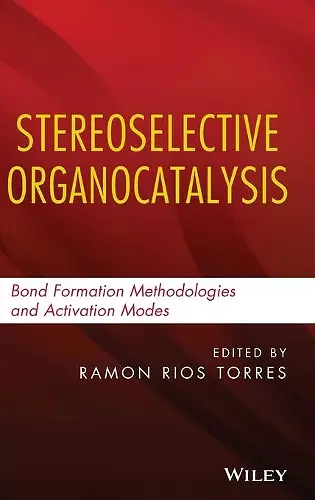Stereoselective Organocatalysis
Bond Formation Methodologies and Activation Modes
Format:Hardback
Publisher:John Wiley & Sons Inc
Published:13th Aug '13
Currently unavailable, and unfortunately no date known when it will be back

Sets forth an important group of environmentally friendly organic reactions
With contributions from leading international experts in organic synthesis, this book presents all the most important methodologies for stereoselective organocatalysis, fully examining both the activation mode as well as the type of bond formed. Clear explanations guide researchers through all the most important methods used to form key chemical bonds, including carbon-carbon (CC), carbon-nitrogen (CN), and carbon-halogen (CX) bonds. Moreover, readers will discover how the use of non-metallic catalysts facilitates a broad range of important reactions that are environmentally friendly and fully meet the standards of green chemistry.
Stereoselective Organocatalysis begins with an historical overview and a review of activation modes in asymmetric organocatalysis. The next group of chapters is organized by bond type, making it easy to find bonds according to their applications. The first of these chapters takes a detailed look at the many routes to CC bond formation. Next, the book covers:
- Organocatalytic CN bond formation
- CO bond formation
- CX bond formation
- CS, CSe, and CB bond formation
- Enantioselective organocatalytic reductions
- Cascade reactions forming both CC bonds and Cheteroatom bonds
The final chapter is devoted to the use of organocatalysis for the synthesis of natural products. All the chapters in the book are extensively referenced, serving as a gateway to the growing body of original research reports and reviews in the field.
Based on the most recent findings and practices in organic synthesis, Stereoselective Organocatalysis equips synthetic chemists with a group of organocatalytic reactions that will help them design green reactions and overcome many challenges in organic synthesis.
“The book is nicely structured and the chapters are extensively supplemented by references, offering the reader a practical overview of the field of asymmetric organocatalysis . . . Congratulations to the editor and to all the authors for this nice piece of work.” (Angew. Chem. Int. Ed, 1 October 2014)
ISBN: 9781118203538
Dimensions: 241mm x 163mm x 34mm
Weight: 1080g
674 pages